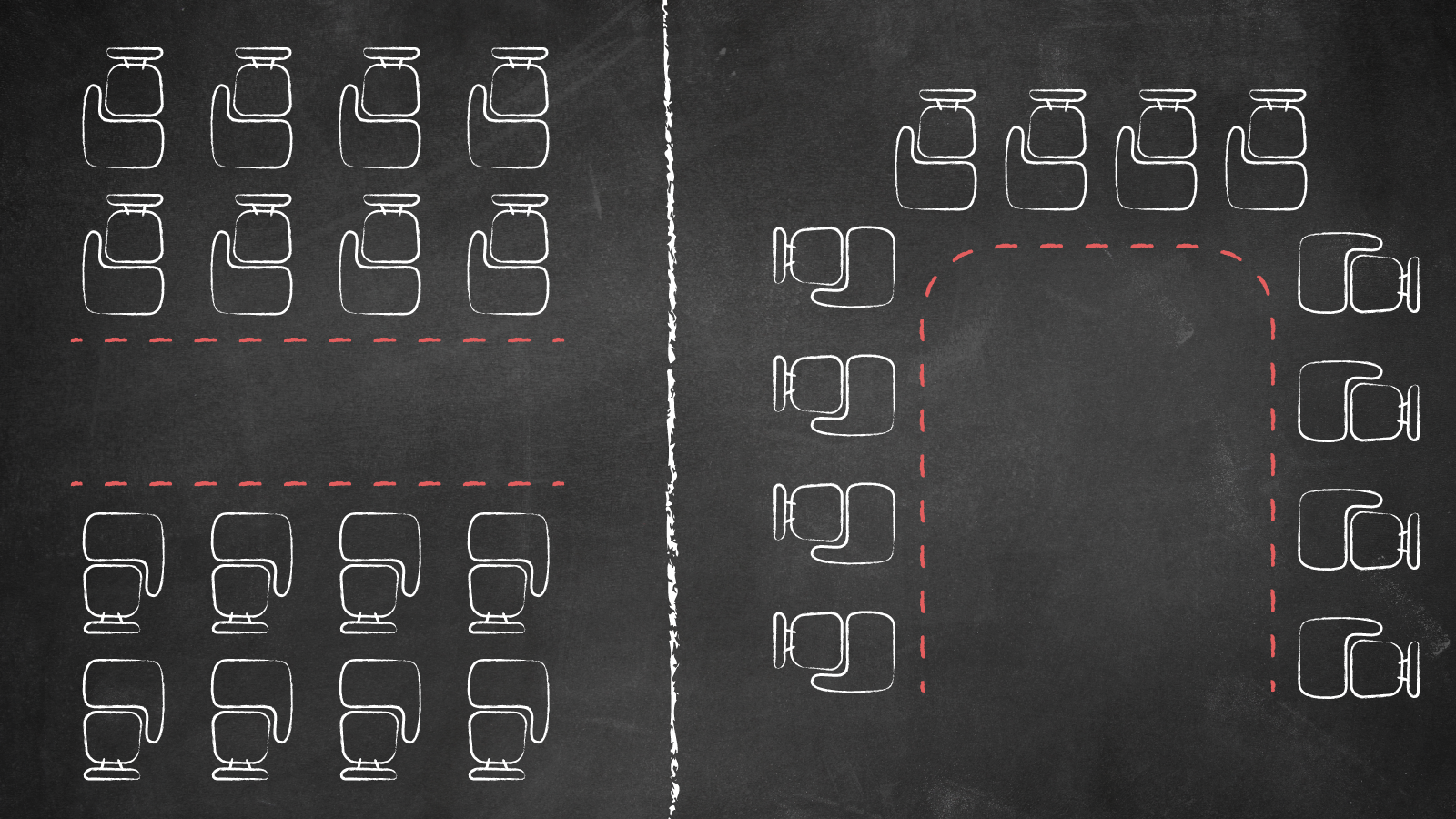
Start off the school year with classroom organization strategies that improve learning.
Fall is a great time to rethink classroom organization and start off the year right by creating the perfect conditions for learning social studies. One of my favorite resources on learning environments is “Creating Conditions for Learning,” the Classroom Organization and Management Program from Peabody College of Education and Human Development. It lays out three factors that teachers must consider when planning the design of their physical classrooms: visibility, accessibility, and distractibility.
Visibility
In an ideal learning environment, students should be able to see the area in which you are teaching without having to move their desks or themselves, and teachers should be able to see them without any impairments. Of course, most teachers are often up and moving, but for those times when it is necessary to sit and complete some immediate work, make sure you are still able to see all the students in your room. The back is generally a good place for you to sit while students are completing work on their own, because you can see students but they can’t necessarily see you.
Visibility Checklist:
- Is your desk or sitting area at the front of the room or at the back?
- Can all students see the instructional area of the room without difficulty?
- When students work on their own, can you see all of them?
Accessibility
Make sure you have access to all your students. Tight aisles of desks can make it hard to speak with or assist students who sit in the back of the classroom, and may become less engaged. Try different desk formations to find one that works for you. A horseshoe arrangement might be suitable depending on your class size. For social studies, my favorite arrangement is to have students facing each other so they can engage in discussions more naturally.
Of course accessibility to students is a priority, but what about accessibility to your teaching resources? As I recall as a former high school teacher, if I got distracted so did the students. It’s best to have all your resources together and ready to go at the beginning of each period. If you have to go look for something the students might get off task and you will have to bring them back, which means more teaching time is lost.
Accessibility Checklist:
- Can students access everything they will need for the class without causing disruption?
- Where is your trash can located? (Is it away from other students, or does going to the trash provide opportunity for students to engage with classmates?)
- Do you have access to all of the students?
- Can you walk around the room and get to each student?

Distractibility
Thoughtful classroom organization can also reduce distraction. Anything that can distract students certainly will, so find ways of arranging the classroom that reduce distractions whenever possible. Keeping the door closed, rather than open to the hallway where students’ friends might walk by, is a simple fix. Making a procedure that prevents students from getting up to go to the trash can or the pencil sharpener can help students stay focused. The less students are distracted by things the better your chance at keeping them on task. Of course, the best deterrent is an engaging lesson.
- Do you keep your door closed, or is it open to the hallway where people are walking past?
- Are students allowed to get up during class to go to the pencil sharpener and trash can?
Sign up to get more posts like this in your email inbox
Adjust and keep adjusting
Adjusting your classroom set-up at the beginning of the school year is an often overlooked aspect of back-to-school, one that can truly help set the ideal learning environment. Some minor adjustments might be needed throughout the year as you test this environment and see what works for you and your classroom. I hope this article will increase awareness of how much classroom organization can truly help improve learning.
Here are a couple of articles of interest:
Kaser, Catherine Hoffman. “Arranging the Physical Environment of the Classroom to Support Teaching/Learning.” Series on Highly Effective Practices—Classroom Environment.
Hannah, Ryan. “The Effect of Classroom Environment on Student Learning.” (2013). Honors Theses. Paper 2375.
Leave me notes in the comments—does the physical structure matter to you? Do desks in straight rows verses desks in a horseshoe arrangement communicate anything to students?
Stay up-to-date on solutions for social studies classrooms and curricula
Pam Gothart has been in education for 22 years including teaching high school social studies, and spent 12 years as a history director. Pam holds an Ed.S. from Samford University, where she focused her study on professional learning. She is passionate about education and helping teachers to be unique and effective leaders.

